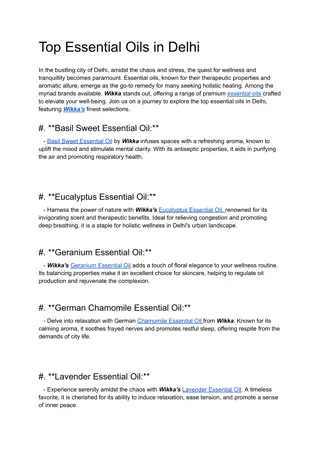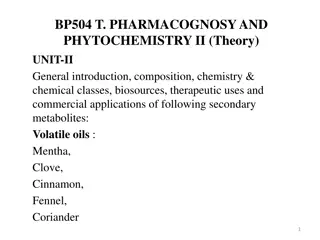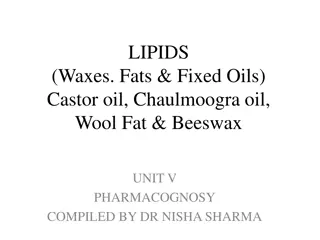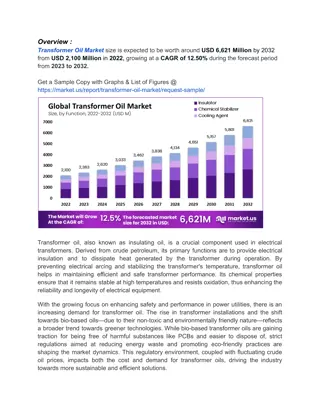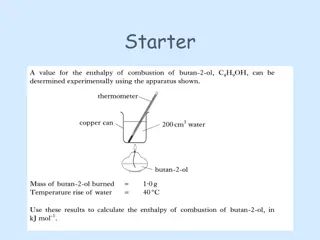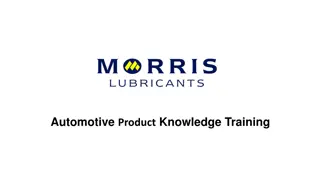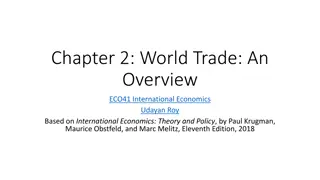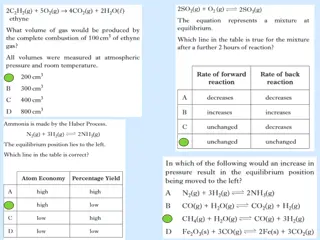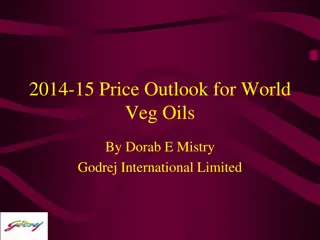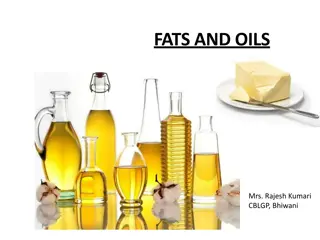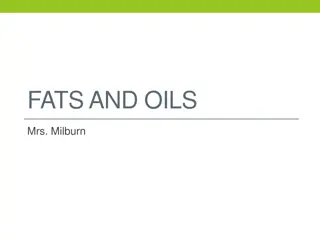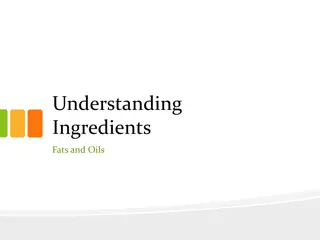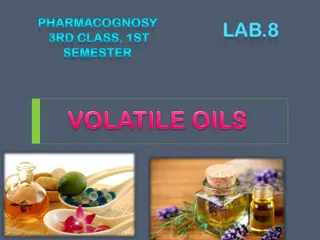Understanding Standards for Essential and Vegetable Oils Trade
Delve into the significance of standards in facilitating or hindering essential and vegetable oils trade. Explore the role of regulatory requirements, buyer specifications, and additional certifications in shaping trade practices. Gain insights into the diverse types of standards and learn how to choose the right one based on product, customer, and market demands.
Download Presentation

Please find below an Image/Link to download the presentation.
The content on the website is provided AS IS for your information and personal use only. It may not be sold, licensed, or shared on other websites without obtaining consent from the author. Download presentation by click this link. If you encounter any issues during the download, it is possible that the publisher has removed the file from their server.
E N D
Presentation Transcript
Standards for essential and vegetable oils trade facilitator or barrier? Elsie Meintjies Global Quality and Standards Programme 15 September 2023
Standards for essential and vegetable oils trade facilitator or barrier? Preparing for biotrade industry exports 15th September 2023 Dr Elsie Meintjies Chief Technical Advisor Global Quality and Standards Programme South Africa project (GQSP-SA) 2
SUPPLY CHAIN Requirements Customer requirements Voluntary standards Method of checking Regulatory requirements BUYER SUPPLIER Consumer Trader Manufacturer Organisation Government Agency PRODUCT OR SERVICE Producer Retailer Stockest Service Provider 2024/09/17 3
CONFORMITY ASSESSMENT Regulated Sector VOLUNTARY Government Customer Requirements STANDARDS Regulatory Buyer (Customer) CERTIFICATION Supplier Supplier Buyer (Customer) Accreditation/ Recognition Measurement 2024/09/17 4
Standards form the foundation of world trade Types of standards Product Standards Management System Standards (e.g., ISO 9000 etc) Sector Specific Standards (e.g. medical devices) Private Standards Test methods (e.g. used for the physical and chemical profile of a product) Measurement (e.g. volume, mass etc) Labelling and prepackaging (a compulsory requirement) Conformity Assessment Bodies (e.g., inspection, certification, testing, accreditation) The list goes on . 5
Question: Which standard to use? Answer: What is the product, who is the customer and where is the destination market? Regulatory requirements which must be complied with Standards which define the physical and chemical profile of the product Additional requirements set by buyer (COSMOS, ECOCERT organic standard, NATRUE, responsible sourcing etc) 6
Breaking into the export market 2 types of relationships Reputation/brand (existing with a track record) Use of conformity assessment (e.g. test certificate, certification)(new entrant) 9
Thank you for the opportunity and your kind attention Questions during Q & A session e.meintjies@unido.org 10


